Abstract
If an optically active (chiral) sample is placed in a microscope and illuminated with circularly polarized light, an image can be formed that is related to the circular dichroism of each feature of the sample. A theoretical investigation has been done for the circular differential image obtained by subtracting the images formed under right- and left-circularly polarized light. Two types of differential images are possible: (i) dark-field images formed from light reflected or scattered by the sample and (ii) bright-field images formed from light transmitted through the sample. The sign and magnitude of each feature in a circular differential image strongly depend on the structure of the sample. The dark-field circular differential images are most sensitive to large features with dimensions similar to the wavelength of illumination whereas the bright-field images are most sensitive to the short-range molecular order. Applications of circular differential imaging may include clinical fingerprinting of normal and transformed cells and structural analysis of individual cellular components.
Full text
PDF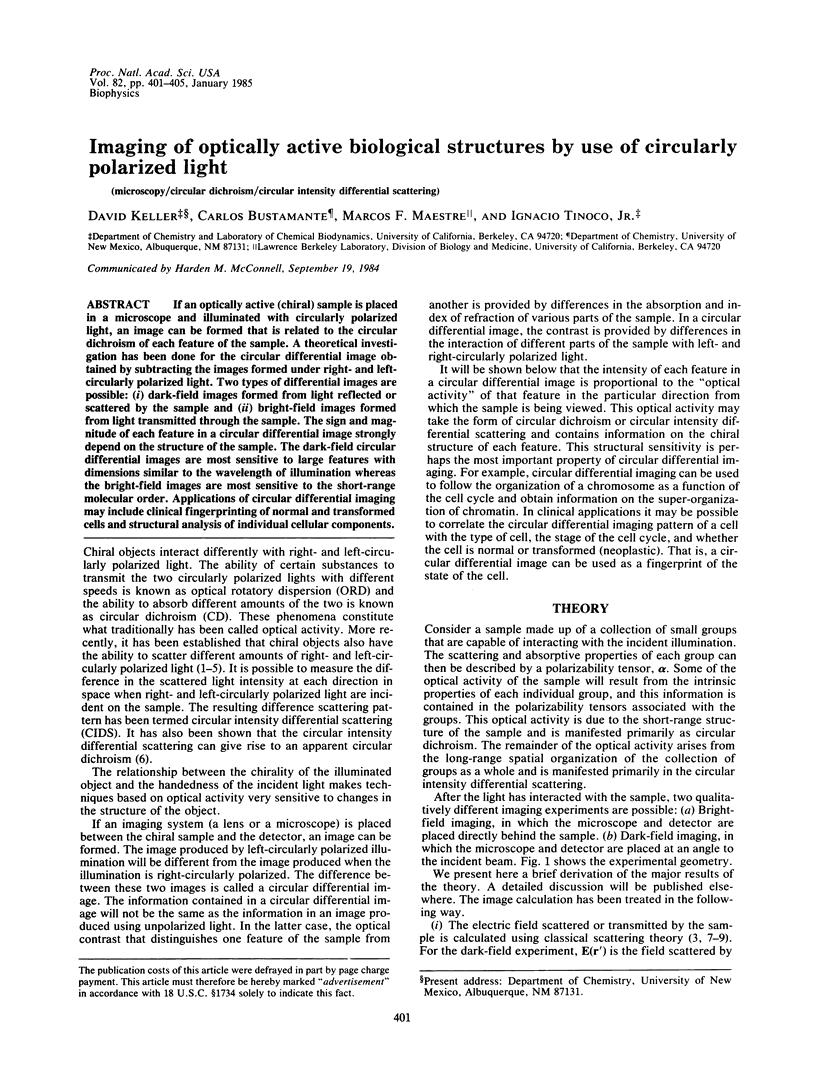
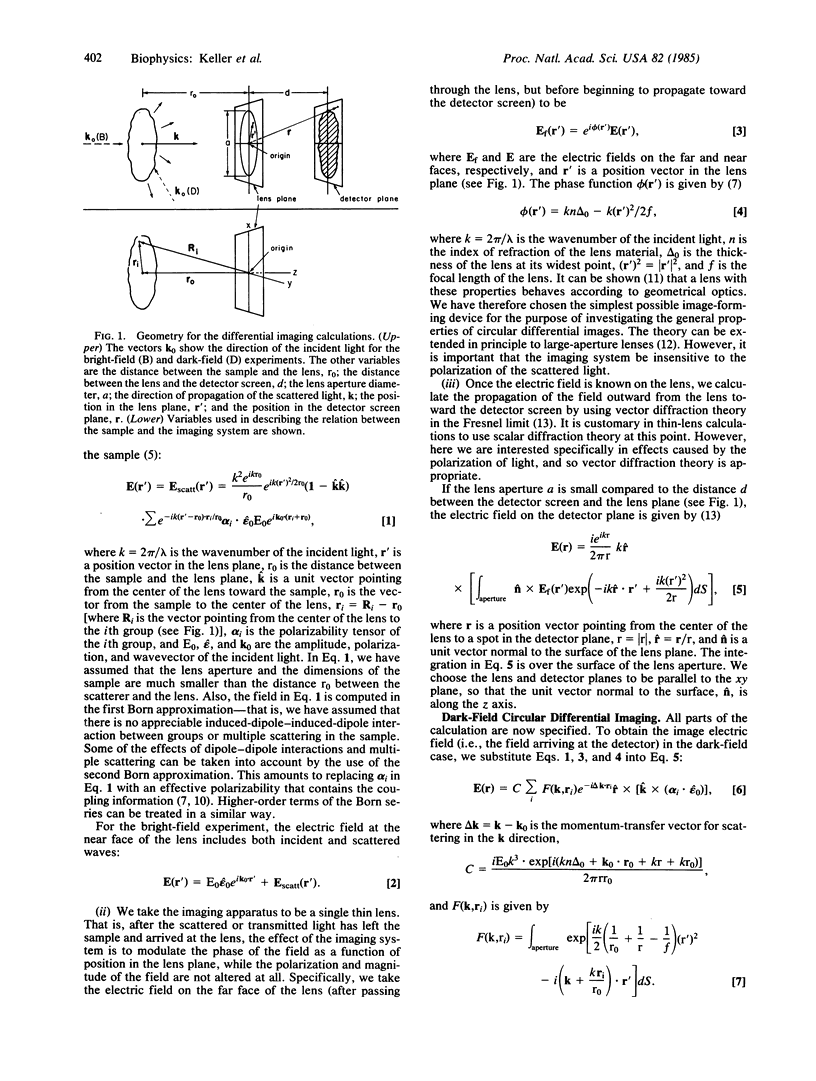
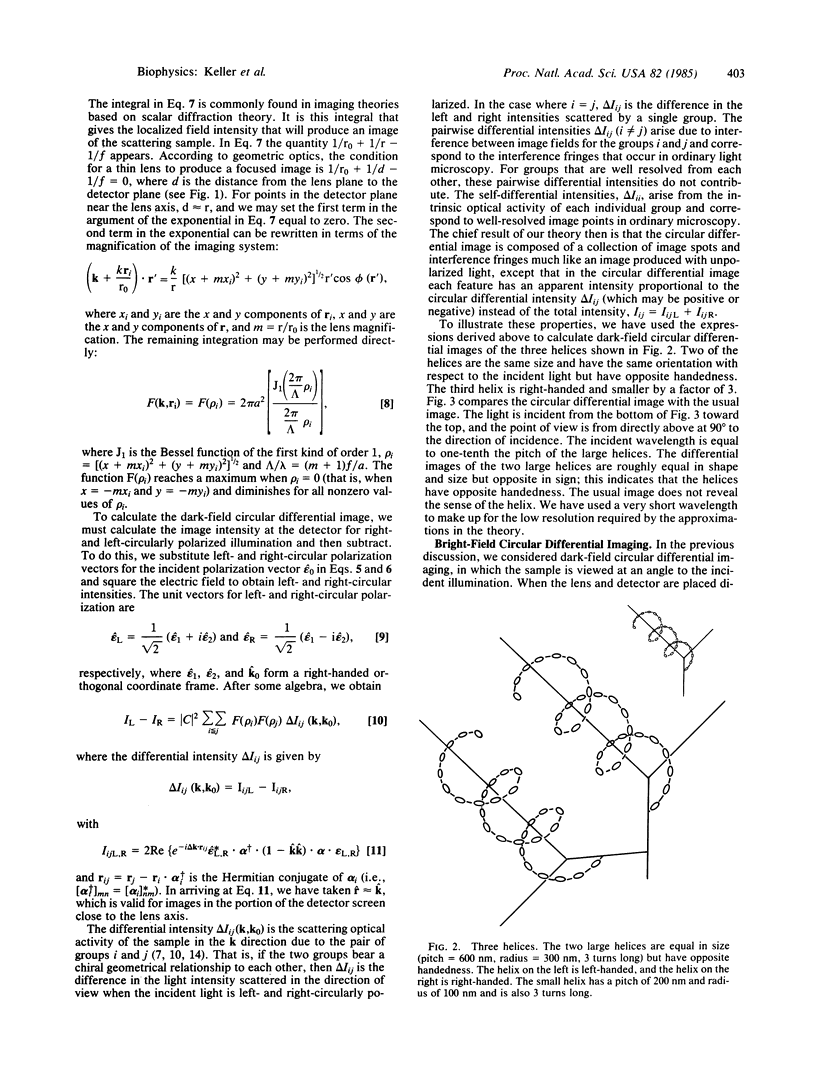
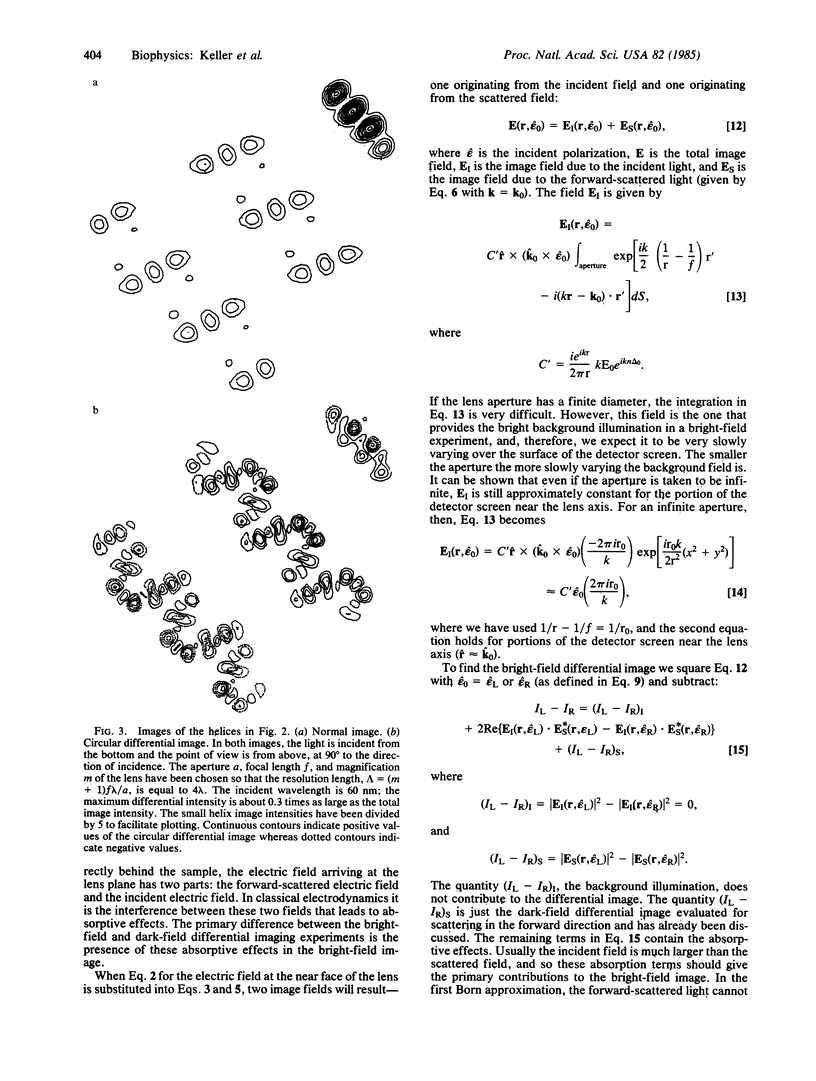
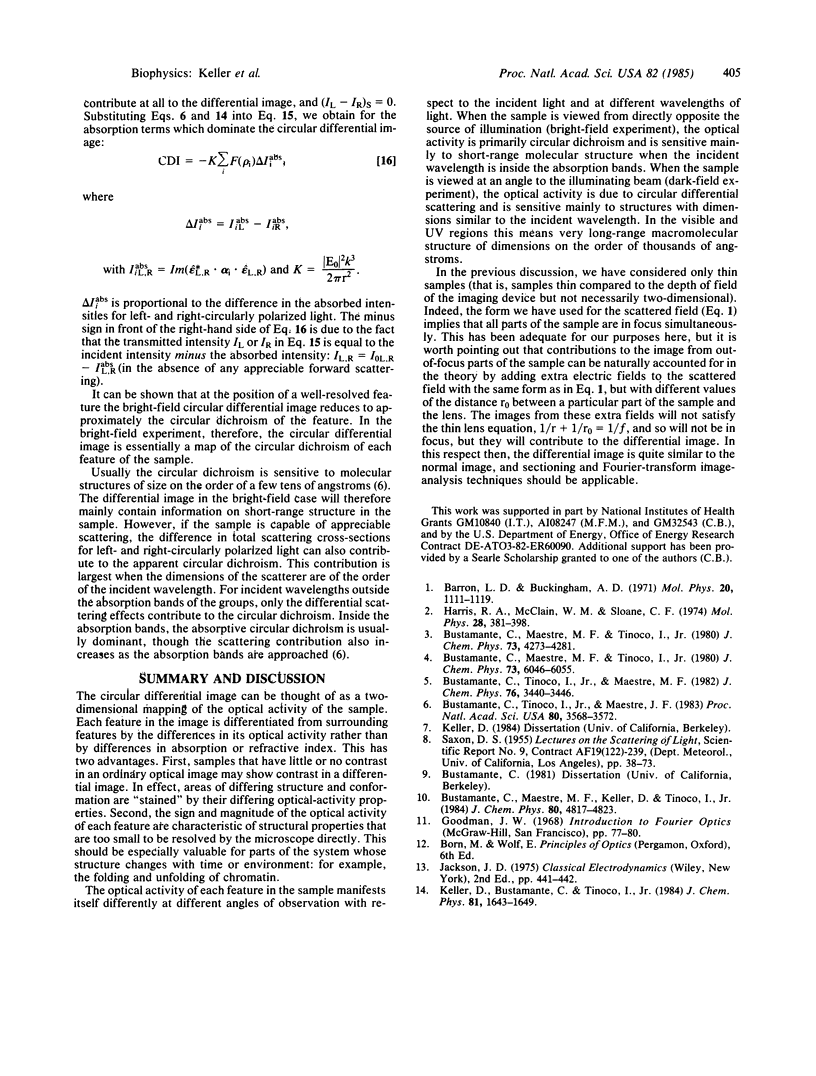
Selected References
These references are in PubMed. This may not be the complete list of references from this article.
- Bustamante C., Tinoco I., Jr, Maestre M. F. Circular differential scattering can be an important part of the circular dichroism of macromolecules. Proc Natl Acad Sci U S A. 1983 Jun;80(12):3568–3572. doi: 10.1073/pnas.80.12.3568. [DOI] [PMC free article] [PubMed] [Google Scholar]


